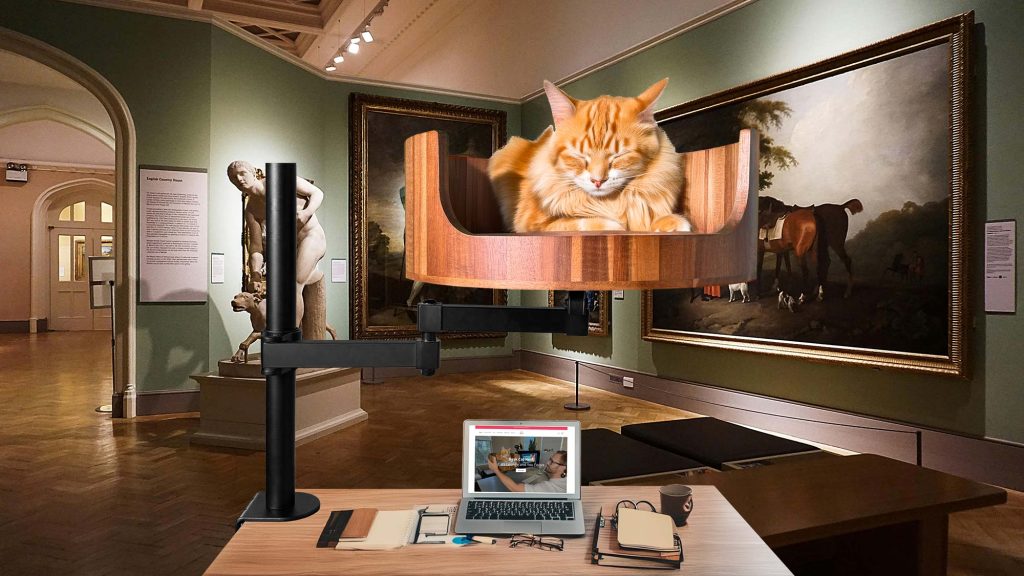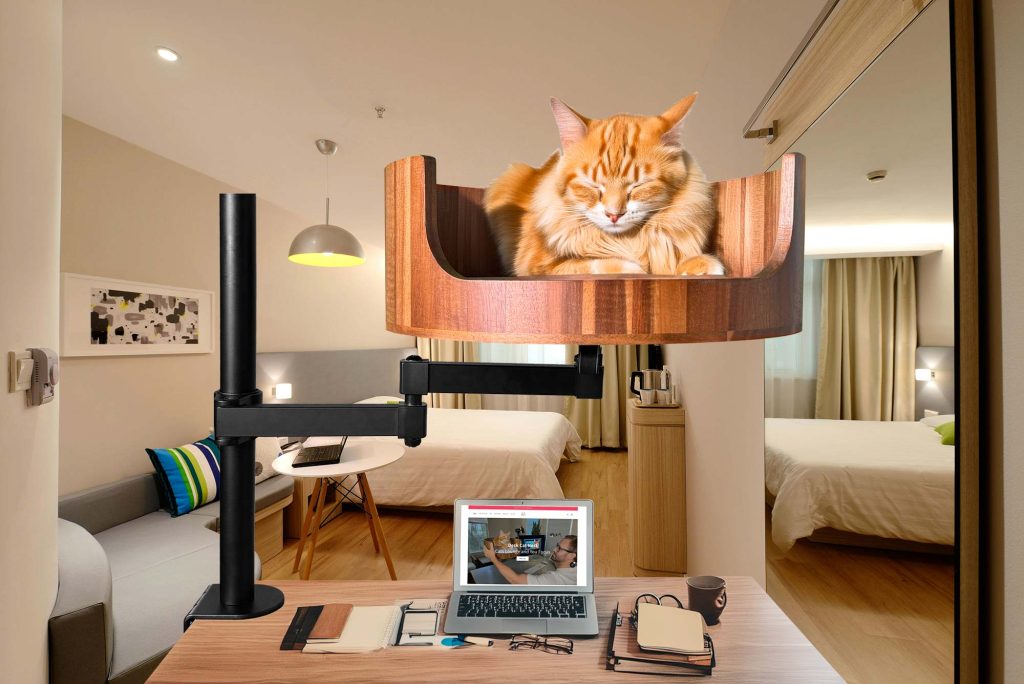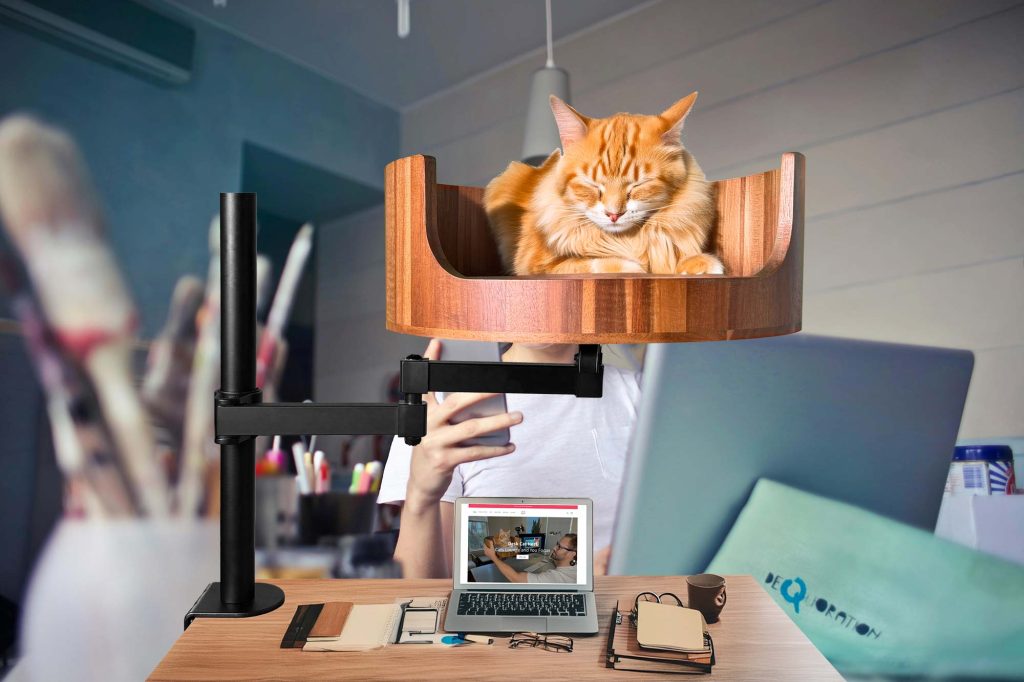Meet Desk Cat Nest, a curious feline who spends hours on end staring at his human companion with intense focus. Have you ever wondered why cats exhibit this behavior? In this article, we will delve into the world of cat staring, exploring the reasons behind their fascination and focus.
Cat staring is a common behavior that many cat owners encounter on a daily basis. From locking eyes with their human to fixating on an object in the room, cats seem to have an innate ability to maintain unwavering focus. In this article, we will discuss the various reasons behind cat staring, such as their natural hunting instincts, curiosity, and desire for attention. Additionally, we will explore how cat staring can vary depending on the individual cat’s personality and environment. So, if you’ve ever found yourself mesmerized by your cat’s unwavering gaze, read on to uncover the secrets behind feline fascination and focus.
1. Cats stare as a way to communicate their needs, emotions, and desires to their owners or other animals.
2. Understanding your cat’s body language and the context of their stare can help decipher their message more accurately.
3. Cats may stare at their owners to seek attention, express affection, or indicate hunger or discomfort.
4. Staring can also be a way for cats to assess their surroundings, show curiosity, or demonstrate a desire for play or interaction.
5. By paying attention to your cat’s stare and responding accordingly, you can strengthen your bond and enhance communication with your feline companion.
Behavioral Science Behind Cat Staring
Cat staring is a common behavior observed in felines that can be attributed to their predatory instincts. Cats are natural hunters, and staring at prey is a way for them to focus and track their target. This behavior is also linked to their excellent vision, as cats have a visual field that is wider than humans. Additionally, cats’ ability to see in low light allows them to hone in on their prey even in dimly lit environments. It is important to understand that cat staring may not necessarily be aggressive or threatening in nature, but rather a display of their natural instinct to focus and concentrate.
Types of Cat Stares
There are several different types of cat stares that owners may observe in their feline companions. One common type is the “slow blink,” where a cat will close its eyes halfway and hold the gaze for a few seconds before reopening them. This behavior is a sign of trust and affection in cats, as it is a way for them to communicate that they feel comfortable and safe in their environment. Another type of cat stare is the “predatory stare,” where a cat will fixate on a target with dilated pupils and a focused expression. This type of stare is often seen when a cat is hunting or engaging in playtime, and it is important for owners to distinguish between this type of stare and aggressive behavior.
Understanding Cat Body Language
In addition to staring, cats also communicate through their body language. By paying attention to a cat’s posture, tail position, and ear movements, owners can gain a better understanding of their feline companion’s mood and intentions. For example, a cat with a stiff body posture, raised fur, and dilated pupils may be feeling threatened or defensive, while a relaxed cat with a low tail and purring may be content and at ease. It is important for owners to be familiar with their cat’s individual body language cues in order to provide the appropriate care and support for their needs.
Managing Cat Staring Behavior
While cat staring is a natural behavior, there are ways for owners to manage and redirect this behavior if it becomes problematic. Providing interactive toys and engaging in playtime with your cat can help satisfy their hunting instincts and provide mental stimulation. Additionally, creating a safe and enriching environment for your cat, with plenty of hiding spots, scratching posts, and perches, can help reduce stress and encourage positive behaviors. If cat staring is accompanied by aggressive or territorial behavior, it is important to consult with a veterinarian or animal behaviorist to address any underlying issues and develop a plan for behavior modification.
Frequently Asked Questions
What causes cats to stare?
Cats may stare for various reasons, including curiosity, boredom, hunting instincts, or simply observing their surroundings. It is a natural behavior for cats to observe their environment.
Will using a Desk Cat Nest help with my cat’s staring habit?
The Desk Cat Nest provides a cozy and comfortable space for your cat to rest and observe its surroundings. By offering a designated space for your cat to relax and feel secure, it may help reduce excessive staring behavior.
How can I encourage my cat to use the Desk Cat Nest?
It is important to introduce the Desk Cat Nest gradually to your cat. Place their favorite toys or treats inside the nest to entice them to explore and use it. Providing positive reinforcement when your cat uses the nest can also encourage repeat behavior.
Is the Desk Cat Nest suitable for all cat breeds and sizes?
The Desk Cat Nest is designed to accommodate cats of various sizes and breeds. However, it is always important to consider your cat’s individual preferences and habits when introducing a new piece of furniture.
Can the Desk Cat Nest help reduce my cat’s stress and anxiety?
While the Desk Cat Nest can provide a safe and comfortable space for your cat, it may not be a complete solution for managing stress and anxiety. It is recommended to consult with a veterinarian or animal behaviorist for personalized advice on managing your cat’s stress levels.
In conclusion, the Desk Cat Bed is a valuable choice for addressing cat staring behavior. By providing a cozy and comfortable spot for your cat to rest and observe their surroundings, this cat bed can help reduce stress and anxiety that may be causing excessive staring. With its plush design and strategic placement on your desk, it’s a win-win solution for both you and your furry friend. Invest in the Desk Cat Bed today to provide your cat with a safe and calming space while working or studying at your desk.


